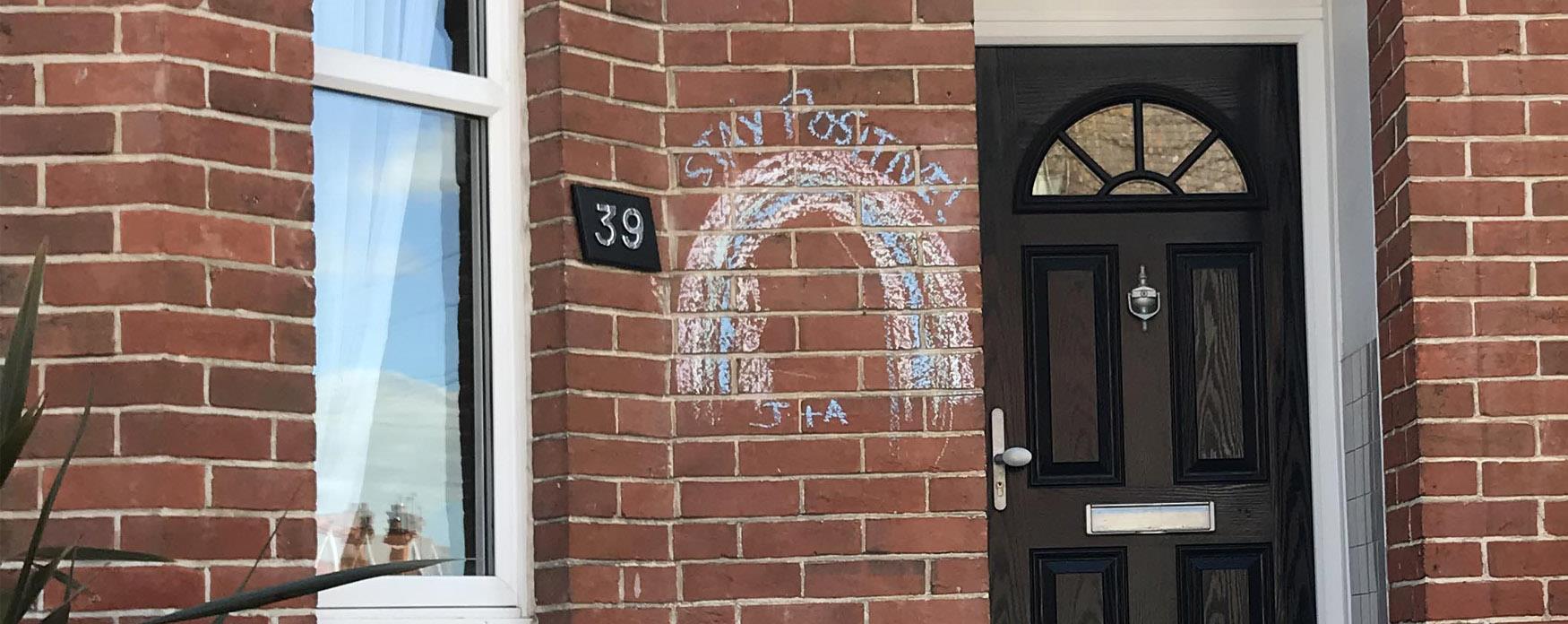We may have temporarily closed our doors, but there are lots of ways to explore our collections and continue learning at home.
Join the Heritage team for short talks exploring the stories of Eastbourne. New episodes released every Friday.
Introduction to Heritage at Home via YouTube
Print this time capsule to record your experiences of this time or use some of the ideas to create your own.
Story of Eastbourne Colouring in
Put some colour into the story of Eastbourne by colouring in the below people. Find out more about some of the other people of Eastbourne in the quiz and trail then have a go at drawing them!
Iron Age woman and child
This woman lived in Eastbourne almost 2250 years ago. She probably lived in a settlement, on what is now Kings Drive, and could have spent a lot of her time working to get salt from the marshes, just metres from her home. She was around 30 – 45 years old when she died and was 156cm tall. She was buried with a child aged between 4 and 5 years old.
Download colouring sheet
Richard de Clouworth
Richard de Clouworth was the Vicar of Eastbourne in 1348 at the time of the Black Death. He was supposed to provide a Chaplain to say masses three times a week at the chapel of St Gregory in Meads in return for the ‘Cryst-share’ from the sea-faring men. Each catch of fish was divided into shares and given to the men who caught them, the owners of the nets and to the Parish Church, the Cryst-share. The Chapel of St Gregory hadn’t had any services for four years until 1353 and Richard was fined. The lack of clergy to celebrate in this Chapel was probably due to half the population dying from the plague.
Download colouring sheet
Robert Fennell
Robert lived with his wife Clemence and their two daughters Catherine and Christabell, in Pococks Manor which stood near to where Burton Road is now, in the area known as Rodmill. Robert left instructions in his will to ‘give forty shillings a year for ever to six poor widows of this parish to be distributed on Ash Wednesday yearly.’ This money was supposed to come from the rent of Robert’s land but when he died, Mr Parker who owned the manor after the Fennell’s, kept the money until 1631 when the payments were restarted. Robert Fennell’s charity payments continued in one form or another for the next 350 years stopping finally in 1982.
Download colouring sheet
Mary Wilson
Mary lived in Bourne Place, now Compton Place with her husband William from 1642. She was the stepdaughter of Dr Burton who owned the house before selling it to the Wilsons.
William became the Sheriff of Sussex in 1653 and the Wilsons became known for their generosity to the poor and the celebrations they held at festival times including Christmas.
William was trusted with the important secret in 1648 that Charles I planned to escape from Carisbrooke Castle on the Isle of Wight and that he should prepare to receive the King at Bourne Place. William replied that he would ‘do it with his life and fortune’ After the Civil War was over, William was correctly suspected to have continued to be staunch royalist and in 1658, a detachment of Dragoons led by Lieutenant Hopkins were sent by Oliver Cromwell to search Bourne Place. William was ill in bed but the quick thinking Mary brought a large pie filled with wheatears for the soldiers to eat and distracted them long enough for her to burn any incriminating evidence in her husband’s files. As soon as she had burned the papers, Lieutenant Hopkins arrived at their bedroom door – luckily for the Wilson’s there was nothing left to link them to the Royalists.
Mary died in 1661 and was buried in St Mary’s Church.
Download colouring sheet
William Hurst
William Hurst was born in 1740 in Eastbourne. He married Elizabeth Chapman in 1773. William founded the brewery that became The Star Brewery in 1777 and he came close to selling it in 1789 to pay for his Uncle Thomas’ debts. One of the selling points was its constant supply of good water from the Bourne stream next to the brewery. The Star Brewery was advertised ‘to let’ again in 1825 by William’s sons George and Harry but the Hurst’s continued to own the brewery until 1886 when it was sold to Colonel Cardwell. It became one of Eastbourne’s biggest employers until it closed in 1967 and was demolished in 1971.
William was a church warden at St Marys Church in 1785 and died in 1800 at the age of 60. Many of the Hurst family are buried in the Churchyard just outside the South Porch.
Download colouring sheet






.jpg)





